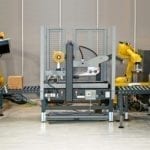The Australian manufacturing sector has fallen from the high point it experienced 20 years ago, with significant drops in both gross domestic product (GDP) and employment contribution.
In 1995, Australian manufacturing employed more than a million individuals, and contributed to 14 per cent of the GDP. Now two decades later, the Commonwealth Scientific and Industrial Research Organisation (CSIRO) reports the industry has dropped to an employment figure of 856,000 and a GDP contribution of just 6.05 per cent.
The manufacturing industry has dropped to an employment figure of 856,000 and a GDP contribution of just 6.05 per cent.
Rebuilding the manufacturing industry
But is Australian manufacturing set to experience a further decline or a revival? Currently, industries all around the globe are experiencing a state of disruption, from both advancing technology and a change in workplace culture.
CSIRO recently released “The Advanced Manufacturing Roadmap”, a plan that highlights significant growth opportunities in manufacturing emerging technologies such as 3D printing, sensors, augmented and virtual reality, advanced materials and robotics.
The success of this plan will largely be dependent on matching global and local wp-contentetites for new technologies, and supplying market-leading products that will see worldwide adoption. Two markets that have shown demand for emerging technologies, specifically in the area of robotics, are Japan and Korea.
Strong trade agreements will support exports
In the Australian Industry Report 2015, the successful future of manufacturing was highlighted by two recent trade agreements, with Japan and Korea, which will provide almost entirely duty-free entry of exported goods into both countries.
The Korea-Australia Free Trade Agreement and Japan-Australia Economic Partnership Agreement entered into force in 2014 and 2015 respectively. For Korea, 88 per cent of Australia’s exported resources, energy and manufacturing products will receive duty-free entry, with all remaining tariffs set to be removed by 2023.

The Japan agreement allows for an even higher rate of goods access, with 97 per cent of exports being giving preferential access or allowed to enter Japan dutyfree.
Future materials and production lines
One of the underlying themes of the market transition for manufacturing is digital disruption. To illustrate this point best is to look to the 1980s and 90s – when the personal computer was introduced. This change led to the closure or sale of many microcomputer manufacturers, as they were unsuccessful in forecasting how the market would change – and how soon.
Advanced Business Manager is a powerful and customisable accounting system, capable of adapting to the changing needs of your industry. To find out more about what our software can do for you, reach out to our team today.







